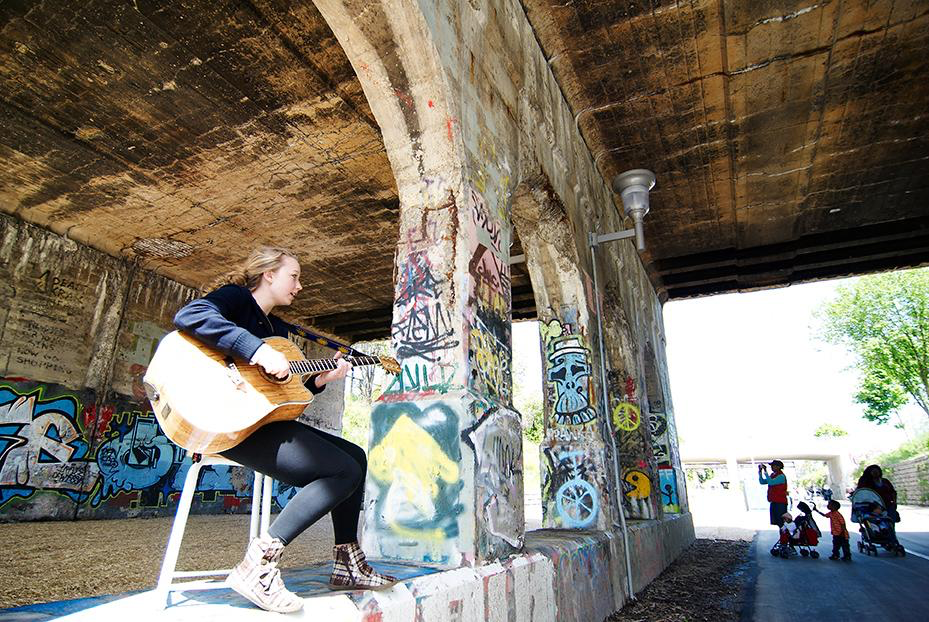Dequindre Cut
Dequindre Cut & Freight Yard, 3019 Orleans St., Detroit, MI 48207
DetroitRiverFront.org (photo credit: Detroit River Front Conservancy)
Detroit has made incredible strides in revitalizing its downtown while embracing the aesthetic and culture of the city as many have come to know it. One of the prime examples of this kind of development done extremely well is the Dequindre Cut Greenway*.
Opened in 2009 and extended in 2016, the former Grand Trunk Railroad line features separated pedestrian and cycling lines connecting the northeastern portion of Detroit near Eastern Market (the largest farmer’s market in the nation) to the Detroit River Walk, running north-south, connecting to Downtown Detroit up near to neighboring Warren, MI.
The sunken perspective of a city in repair offers a unique experience to move through revitalizing Detroit in real time.
Sunken about one story under street level, the Cut offers a stunning view of Detroit’s evolving history, as behemoth tombstones of manufacturing plants and warehouses tower along its edge and, closer to the river, fancy new condos gleam among a mixture of graffiti.
Industrial buildings, warehouses, gathering spaces, and artwork line the Dequindre Cut, speaking to past, present, and future.
This blend of fresh and crumbling infrastructure is the contemporary story of America. Here though, with the Cut’s open performance spaces, beer gardens, and fresh flowers spanning between artistic murals and rogue graffiti, it feels celebratory rather than depressing.
I celebrated my birthday this year with a bike ride with some friends from our Air B&B near the market, through Dequindre Cut, down the River Walk and into Downtown where we easily found all the great food, cocktails, entertainment, and nightlife that Detroit has to offer.
The Ambassador Bridge connects across the Detroit River to Canada.
I couldn’t help but reflect on visiting the city as a kid through the 90s and early 2000s, how much it had changed and how easily connected neighborhoods are now that once seemed so far apart. While I have a lot of strong feelings about the nature of development, displacement, and belonging taking place in cities all across America, it’s hard to argue that a freely accessible, beautifully planned, designed, and executed connective tissue like Dequindre Cut is a good thing for the city.
The iconic Renaissance Center towers over Grant Park and its signature water feature leading into Downtown from the river.
If you’re looking for an inspiring ride that sums up Detroit’s unique blend of rural urbanism and decay in rebirth taking place all at the same time, throw yourself a birthday party with some friends and some bikes here. I promise you won’t regret it.
Dequindre Cut meets the Detroit River Walk at the Milliken State Park Lighthouse along the Detroit River.
*Gentrification is an increasingly loaded term, but it’s also a very real phenomenon. I am not a native Detroiter and developments like Dequindre Cut and their implications are not my place to speak on. I’m certain from my experience in community work elsewhere that there are a variety of views on this topic from locals.
What I do know is that all people deserve access to nice things and the pace of inequitable development taking place in America right now is alarming on a number of scales. If you’re interested in these topics, I recommend starting with the articles below from those working in the public engagement space (don’t be put off by the purposefully incendiary titles).
Most Public Engagement is Worthless







